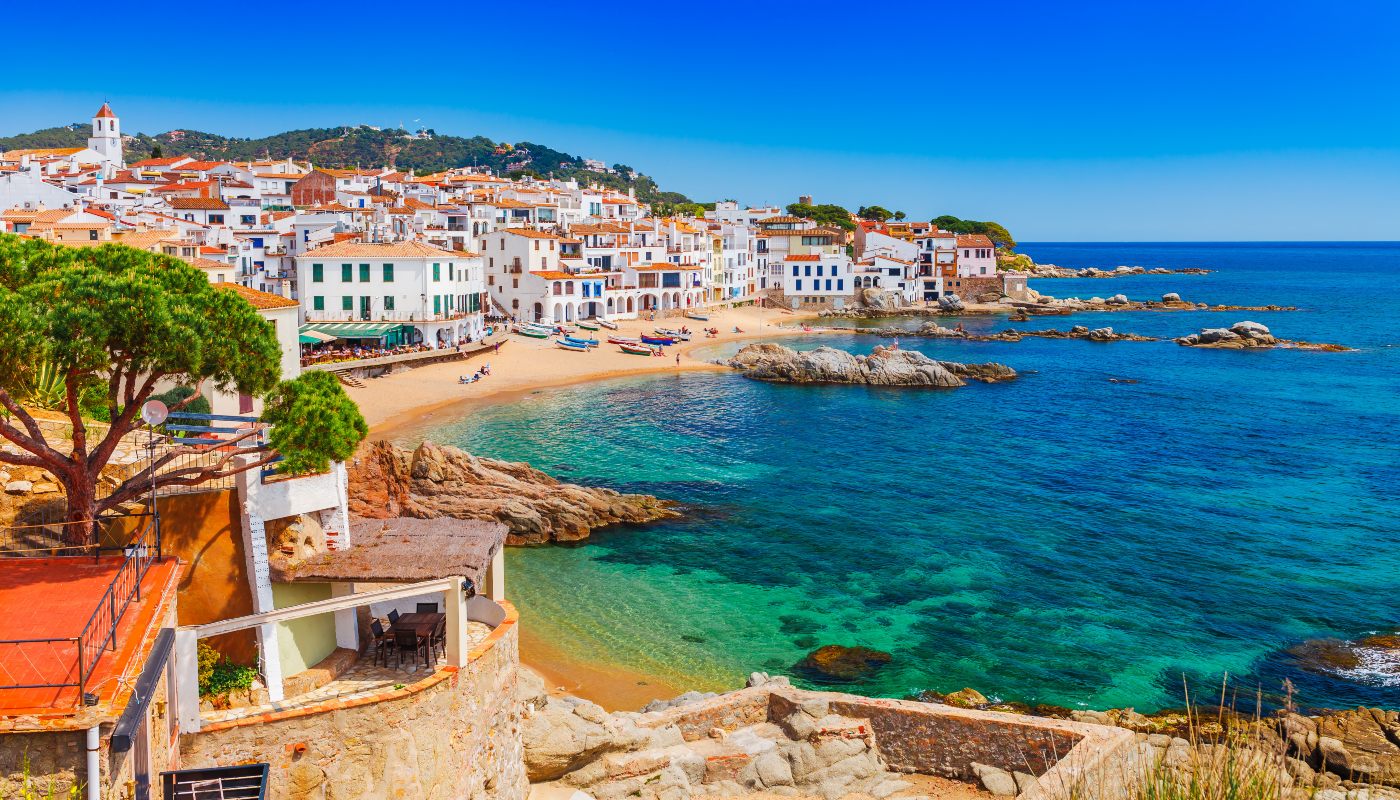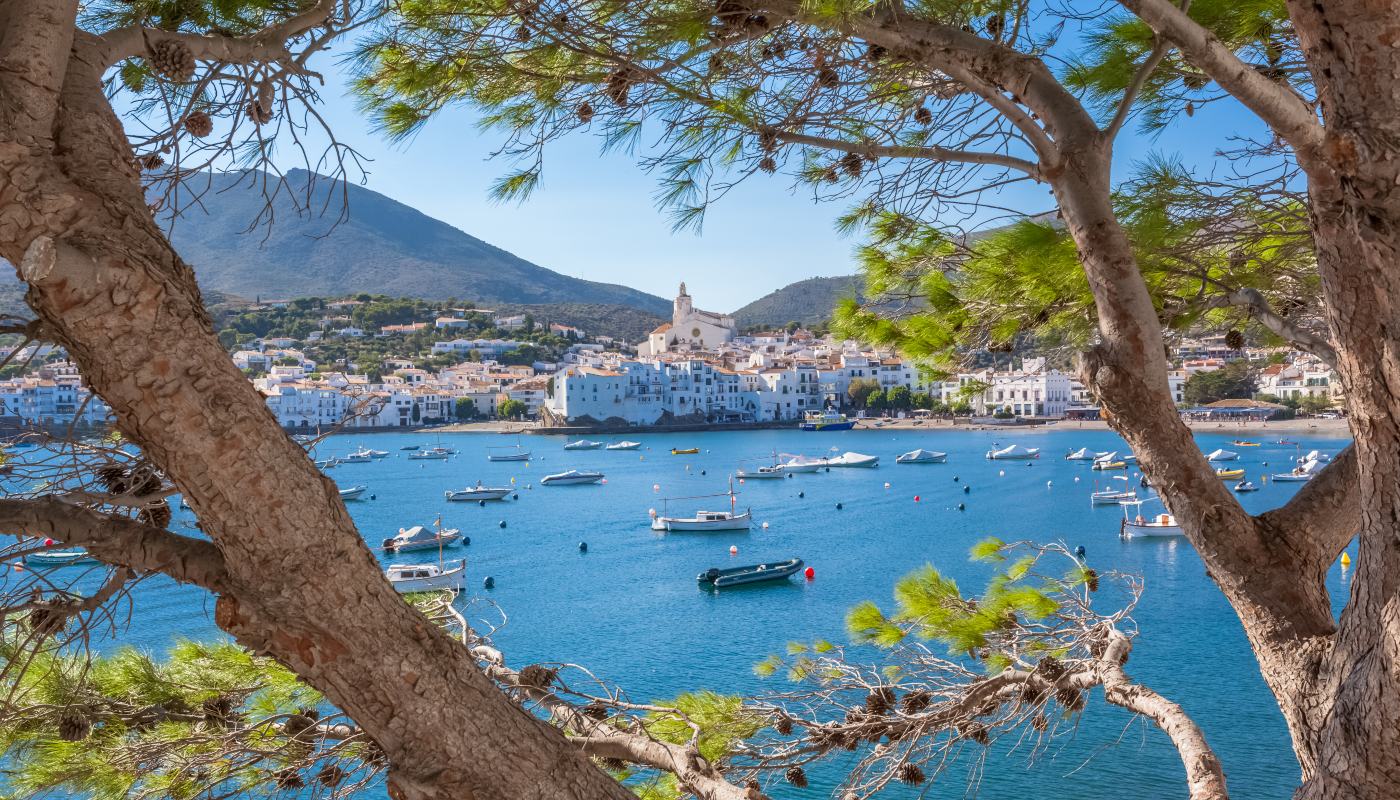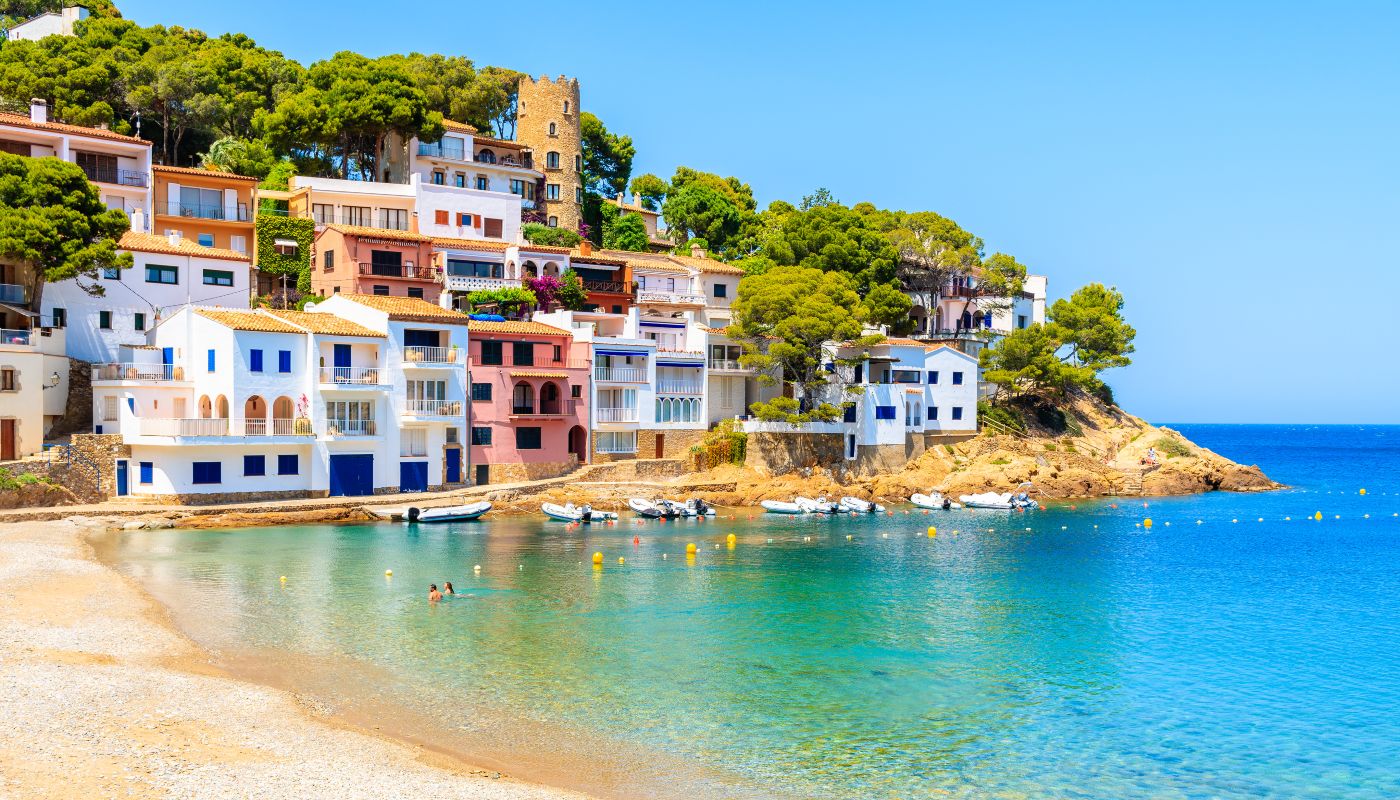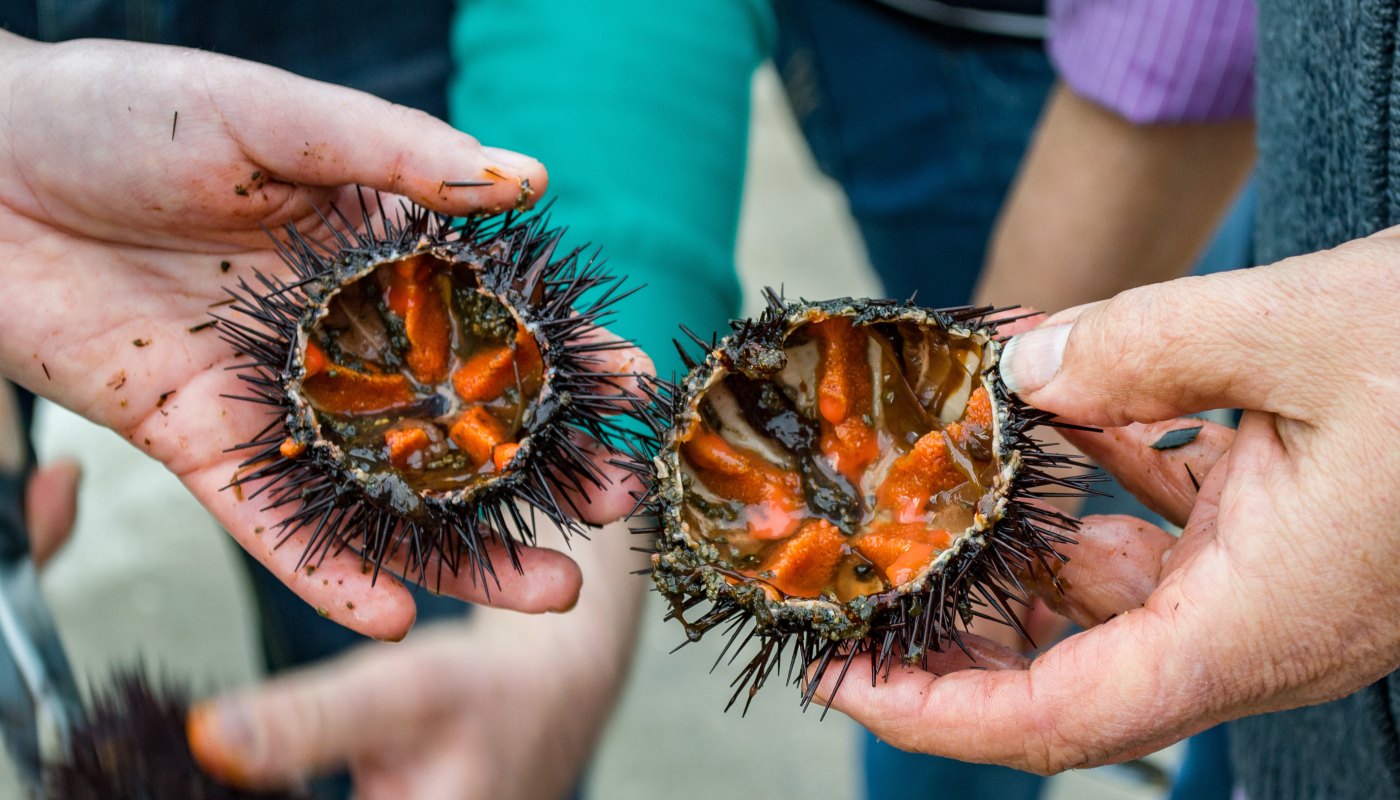Where to go on the Costa Brava: unmissable highlights
Discover the charms of the Costa Brava. We tell you which are the best coves to visit, the most beautiful villages and the typical food you simply can't miss.
TRAVELLING WITH TASTE
Share

Located on the Catalan coast, the Costa Brava is a great area to spend a few days on holiday. Ideally located, it offers a variety of experiences and interesting places to visit. This corner of the Catalan coast has been transformed into a unique and attractive place by the winds of the Mediterranean, such as the tramontana, and its striking cliffs. The turquoise waters of its coves, its charming fishing villages and its delicious gastronomy (with the best fresh fish and seafood in the area) are just some of the many reasons why you should visit.
The Costa Brava is a good place to visit at any time of the year, although if you visit between May and June or from September to October, you can escape the flood of people who visit (and rightly so) during the summer months. That said,what is there to see on the Costa Brava? Keep reading to find out!

What activities can you do on the Costa Brava?
Let's start with the experiences you can have on the Costa Brava, which are not exactly few in number. Among the activities to do on the Costa Brava, the following are perhaps the best. Take note!
- A trip to Cadaqués. Considered to be one of the best towns on the Costa Brava, it undoubtedly has a special charm. The incomparable Salvador Dalí said that it was the "most beautiful village in the world", and we're not about to contradict him. It has retained the spirit of a traditional fishing village, thanks to its well-kept narrow streets and whitewashed cottages. With an array of colourful wooden boats resting on the sand of its coves, the promenade is another of its tourist attractions. To really discover Cadaqués, we suggest you take a walk to Portlligat to visit Dalí's house-museum or go on foot to the Cap de Creus lighthouse or the Cala Nans lighthouse.
- Visit to Calella de Palafrugell. This seaside village is also beautifully preserved, with its historic centre noted for its whitewashed houses, arcades and narrow streets. You can stroll around the village at your leisure and walk (or drive) to the beautiful gardens of Cap Roig. Or perhaps take a walk along the path to Llafranc or head up to the Sant Sebastià lighthouse at sunset.
- Scuba diving on the Costa Brava. There are many areas where you can go scuba diving on the Costa Brava, although one of the best is on the Medas Islands. Declared a Protected National Natural Park, these seven islands are situated opposite the Estartit beach and present an incredible spectacle as you dive into the clear waters. Some diving companies will take you out to enjoy the incomparable coral reefs and numerous fish, but you can also rent a boat, go snorkelling or use one of the glass-bottomed boats to delight in the incomparable views.
- Walk along the coastal paths. Another of the activities you can do on the Costa Brava is to walk along the coastal paths, which once served as a place from which smuggling by sea was monitored and have become one of the area's main attractions. You can stroll alongside the sea and coves, and discover other lighthouses and charming villages along the way.
- Experiences in Empuriabrava. This picturesque town is known as the "Catalan Venice" because of its canals. In addition to exploring the surrounding area, you also go skydiving, visit an archaeological site that is more than 2,000 years old or see wild flamingos in a natural park.
- Hiking in the Cap de Creus Natural Park. A good idea is to take a hike through this place eroded by water and strong winds. Its hidden coves with whimsically rounded rocks, as well as the sparse vegetation and ancient paths make it well worth completing several trails to really get to know the place.
- Visit to Tossa de Mar. It is considered to be one of the most beautiful places with the best preserved old town. Presided over by a photogenic castle and an imposing wall, it still retains its medieval appeal.
- Visit to Figueres. The birthplace of Salvador Dalí has a rich heritage that includes its old mediaeval walls and the castle of Sant Ferran.
- Visit to Besalú. We suggest you head away from the coast to visit one of Spain's best-preserved mediaeval villages. Strolling through its streets, you will feel like you are travelling into yesteryear. Don't miss its Romanesque bridge, one of its distinguishing features.

Best coves on the Costa Brava
Swimming in the crystal-clear waters of one of the Costa Blanca's coves is a real treat. Formed over centuries by the sea and the wind between the steep coastal cliffs, with many of them surrounded by pine trees and vegetation, they are a veritable spectacle for the senses. The best coves on the Costa Brava:
- Illa Roja (Begur). Meaning "Red Island", it is named after the characteristic reddish rock that presides over the place. Renowned as an oasis in the middle of nature, it is known for its clear, blue waters, which make it an idyllic landscape.
- Cala Estreta (Palamós). Set in an entirely natural environment, this beach measuring just over a hundred metres is divided in two by a rocky outcrop known as "Cap Roig".
- Cala Rustella (Roses). Considered to be one of the best beaches on the Costa Brava, Cala Rustella is an unspoilt cove of natural and paradisaical beauty that can be accessed on foot from the road.
- Cala de Aiguablava (Begur). The perfect embodiment of the Costa Brava's unique character, it combines a beautiful natural environment of fine golden sand with shallow, crystal-clear waters.
- Cala del Senyor Ramon (Santa Cristina de Aro). A wonderful, wild-looking beach with cliffs that are up to 800 metres tall, with crystal-clear waters below. Plus, it's a nudist beach!
- Cala de Sa Tuna (Begur). One of the best-known coves. Its rocky profile and clear turquoise waters certainly attract attention. It is surrounded by pine forests.
- Playa de Garbet (Colera). In summertime, it becomes one of the busiest beaches due to its location within the bay of the same name. Its formation makes it a perfect place to bathe in its calm waters.
- Cala Pola (Tossa de Mar). This wonderful, lively cove is located in the heart of Camping Pola. Surrounded by pine forests, cork oak forests and vegetation, who could ask for more?

Typical Costa Brava cuisine
The Costa Brava is not only known for its beaches and coves: its products and cuisine are also renowned worldwide for their flavour and quality. With seafood and fish being the main dishes, we tell you about the typical Costa Brava cuisine you have to try:
- Anchovies from l’Escala. These are salted anchovies that can be eaten as an appetizer or used as a condiment in salads. They are called this name because in the town of L'Escala (in Alt Empordà) there are several companies that are dedicated to the canning of this fish. In order to eat them, they must be boned and washed under running water to remove excess salt. Once you have the fillets, simply drizzle olive oil over them and serve with bread.
- Palamós prawns. These prawns have become a prestigious product that is renowned all over the world. Although these crustaceans have traditionally been fished in all the coastal and seafaring villages on the Costa Brava, the prawns from Palamós and Calonge are absolutely unbeatable and stand out from the rest. Reddish in colour and with a sweeter flavour than those found elsewhere, they are usually served grilled with a little salt, pepper and olive oil.
- Pals rice. The excellent quality of this rice can be attributed to the climate of the Empordà region, which allows it to ripen more slowly, and to the confluence of the fresh waters of the River Ter and the Mediterranean Sea. The best-known varieties are Bahía, Bomba, Carnaroli and Nembo. It is an ideal rice for a casserole.
- Sea urchins (garoina). Covered with skewers, this animal hides a juicy and tender meat with a powerful marine flavour that leaves no one indifferent. The traditional way to eat it is raw, seasoned with a little lemon. They can also be cooked, although they must be cleaned very well because they can contain traces of sand from the sea.
- Figueras onion. This variety of onion can be recognised by its purple outer layer and a slightly flattened shape. Prized for its sweet taste and soft yet crunchy texture, the best way to prepare it is to pound it and separate the pieces by hand. It can be eaten raw in a salad with a little oil, or it can be roasted.
- Butifarra dulce. Made with raw lean pork, sugar, lemon peel, salt and cinnamon (the last ingredient is optional). It has a pink colour when raw and a greyish pink colour when left to dry. There are many ways to cook it: in a pot, in a frying pan, in an oven, on a grill... It can be served with caramelised bread or apple toast.
- Requesón de trapo (rag cottage cheese). This fresh cheese is made with sheep's milk, goat's milk or both. It is pure white in colour, has a soft and creamy texture, and a fresh and sweet flavour. It gets its name from the fact that, during the production process, it is wrapped in a cellulose cloth to allow it to rest. It is usually eaten as a dessert and served with honey or sugar.
- Aceite del Empordà. This region has a long tradition of olive growing and olive oil production. The olive oil bearing the protected designation of origin (PDO) Aceite de L'Empordà is made from olives of varieties native to the area such as agrudell, corivell and verdal. It has a clear, clean and transparent appearance and its taste is flavourful, aromatic and pleasant on the palate. This makes it perfect for seasoning all kinds of dishes or pairing with a good slice of bread.
- Empordà wine. The Empordà designation of origin (DO) is made up of forty wineries with vineyards in the Alt and Baix Empordà regions. Here you will find rosé, fruity and fresh wines, although the most outstanding is the Garnatxa.
- Cremat. Also known as "ron cremat", it is an alcoholic drink with rum, coffee beans, sugar, lemon peel and cinnamon, served hot. Although it is difficult to find, it is most consumed in Calella de Palafrugell, especially during the summer.






